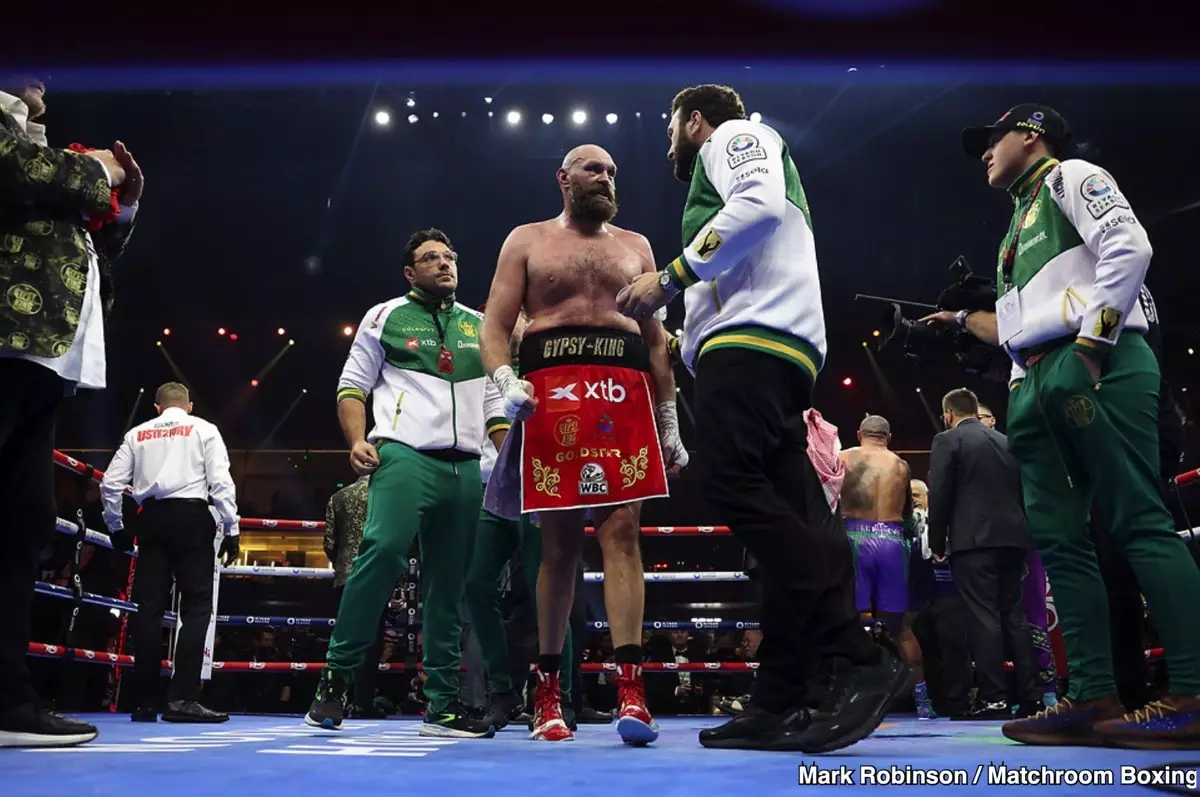Boxing fans were treated to a highly anticipated rematch between Tyson Fury and Oleksandr Usyk on December 21st. What many expected to be a thrilling clash among heavyweight titans turned into a revealing display of Fury’s decline in performance. The bout, held in Riyadh, ended with a unanimous decision victory for Usyk, marked by scores of 116-112 across the board. This article reflects on Fury’s disheartening showing and the implications it holds for his future in boxing.
In stark contrast to their first encounter, Fury’s performance in the rematch was alarming. Observers noted a significant drop in his effectiveness. Where he previously exuded agility and confidence, Fury appeared to be burdened by his own physicality, reminiscent of a fighter succumbing to age rather than one advancing through the ranks. His failure to deliver significant offense was palpable, with comments from viewers indicating Usyk’s dominance, even suggesting a score of 10-2 in Usyk’s favor. Fury’s once-vibrant footwork seemed replaced by lethargy, suggesting that his decline was not merely a fleeting concern but possibly symptomatic of deeper issues.
Fury entered the ring against Usyk with an unsettling strategic approach, opting to increase his weight in an attempt to leverage size, a tactic that proved ineffective against Usyk’s speed and technical prowess. Unlike his successful strategy against Deontay Wilder, this approach backfired spectacularly. Instead of overwhelming Usyk, Fury’s bulk became a hindrance, as he struggled to close the distance and employ effective offense—indicative of a fighter outmatched not merely in physical attributes but also in tactical execution.
As the fight progressed, Fury resorted to grappling, hoping to use his size to suffocate Usyk’s combinations. However, this approach was ill-conceived. Every time Fury attempted to clinch, Usyk responded with quick, punishing shots that left Fury vulnerable and exposed. This reflected not only poor tactical decisions but also an inability to adapt in the face of adversity, a hallmark of a seasoned champion.
A critical aspect of Fury’s performance laid in the seeming ineffectiveness of his trainer, SugarHill Steward. As rounds dwindled and Fury found himself falling behind, Steward’s messages appeared insufficient, failing to convey the urgency of the situation. Rather than instilling a sense of desperation, Steward did not clarify the need for Fury to seek a knockout in the closing rounds.
This raises questions not just about adaptability in the heat of a high-stakes fight but also about how coaches communicate pivotal messages. Fury, now 36 years old, should be armed with the experience to recognize when he is in peril, but the absence of crucial guidance compounded his shortcomings. The ramifications of this miscommunication highlight the importance of a trainer’s role in reinforcing a fighter’s needs during a bout—something that proved problematic for Fury.
While Tyson Fury has basked in the glory of past victories, particularly his historic win over Wladimir Klitschko in 2015, the question looms large: what lies ahead for a fighter who appears to be on the wane? The trajectory of his career is unsettling, and the prospect of retirement becomes increasingly salient. With rumored future bouts against Anthony Joshua, Fury must examine whether he possesses the requisite skills to reclaim relevance in today’s heavyweight landscape.
The dual fights against Joshua could serve as a swan song for Fury, but fans are left contemplating the legacy he wishes to leave behind. As he stands on the cusp of an uncertain future, the contrasting fortunes in his bouts against Usyk reveal a disheartening truth: greatness is fleeting, and the path of a champion often dwindles faster than anticipated. In this light, Tyson Fury must make existential decisions about how he wishes to write the final chapters of his boxing narrative.


Leave a Reply